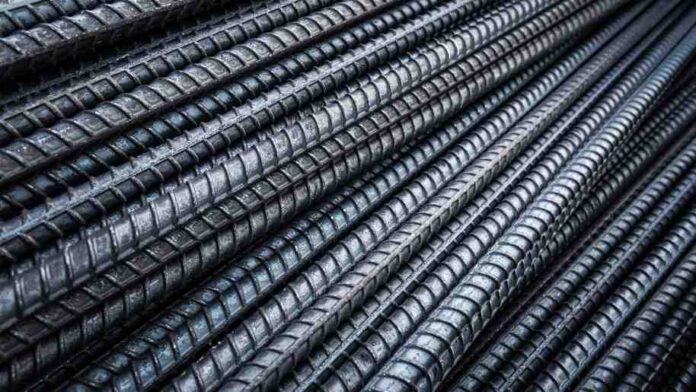Introduction
In a concerning development for the construction sector, domestic steel prices in the country have experienced a second upward revision in August. The relentless surge in raw material prices and the looming specter of inflation have cast a shadow over the construction industry. This surge has led to a substantial hike in steel rebar prices, dealing a blow to ongoing and planned construction projects. Industry experts and analysts are closely watching the situation unfold, as the impacts ripple through the economy.
Unyielding Steel Prices Surge
Steel rebar, a key construction material, has seen its prices climb by a substantial margin, rising by up to ~Rs. 10,000 per ton. This price adjustment became effective from August 16, 2023. According to data provided by JS Research, the retail prices for steel rebar have now reached a range of Rs. 270,000 to Rs. 280,000 per ton. This marks a significant escalation from the previous pricing structure observed on August 2nd, where steel rebar prices were hovering between Rs. 260,000 and Rs. 267,500 per ton.
Implications for Construction Sector
The latest increase in steel prices is poised to have far-reaching consequences for the construction industry. With construction projects heavily reliant on steel as a core component, the price hikes threaten to inflate project costs substantially. This, in turn, could lead to delays and even cancellations of projects, as stakeholders grapple with the financial implications of these changes.
The timing of these price hikes is particularly concerning. As the country grapples with economic recovery post the global pandemic, the construction sector was seen as a key driver for employment generation and overall economic growth. However, these successive price hikes in steel could potentially dampen these growth prospects, creating a ripple effect across various industries that rely on construction activities.
Potential Supply Shortages
Industry experts are also raising alarms about potential supply shortages in the coming weeks. The sharp rise in steel prices might prompt buyers to stock up on steel products to mitigate the impact of future price hikes. This surge in demand, coupled with potential disruptions in the supply chain due to the ongoing raw material crisis, could lead to shortages in the market. Such shortages could not only escalate steel prices further but also lead to project delays due to unavailability of essential materials.
Challenges Faced by Steel Industry Players
For over a year now, key players in the steel industry have been voicing their concerns about challenges related to imports. They contend that the steel sector forms the backbone of the economy and serves as a significant export sector for the nation. The ongoing hurdles have magnified the need for government intervention and support to steer the industry through these turbulent times.
The manufacturers in the steel sector are now looking to the government for assistance in overcoming these challenges. As the construction industry faces headwinds due to the rising costs of steel and other construction materials, they seek policies and measures that can stabilize steel prices and ensure a steady supply of materials. This, they argue, is essential for safeguarding the industry’s contributions to the economy and supporting its recovery from the crisis.
Navigating the Crisis
As the construction and steel industries confront these challenges, collaborative efforts between the private sector and the government become imperative. The government’s role in ensuring the smooth functioning of the steel supply chain, minimizing trade bottlenecks, and providing financial incentives to the industry can help alleviate some of the pressure caused by rising steel prices.
Moreover, stakeholders in the construction industry should also explore strategies to optimize resource utilization and explore alternative materials that could mitigate the reliance on steel, at least temporarily. This could involve innovative construction techniques and materials that offer comparable structural integrity while being more cost-effective.
Related Article: CATL Unveils Breakthrough Shenxing Battery: Revolutionizing EV Charging and Range
Conclusion
The steep increase in steel prices, exacerbated by surging raw material costs and inflationary pressures, has cast a cloud over the construction sector’s growth prospects. With steel rebar prices skyrocketing and potential supply shortages looming, the industry faces a critical juncture. To prevent further disruption and sustain economic growth, a collaborative approach involving both government support and industry innovation is essential. As the construction sector navigates these turbulent waters, its resilience and adaptability will play a pivotal role in determining its trajectory in the post-pandemic economic landscape.

